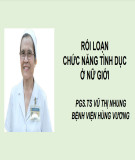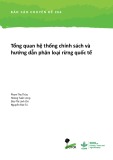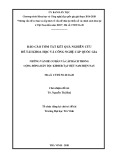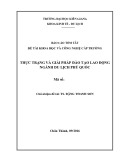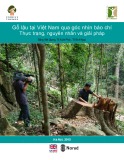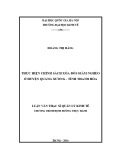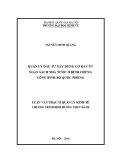
Waning et al. Globalization and Health 2010, 6:9
http://www.globalizationandhealth.com/content/6/1/9
Open Access
RESEARCH
BioMed Central
© 2010 Waning et al; licensee BioMed Central Ltd. This is an Open Access article distributed under the terms of the Creative Commons
Attribution License (http://creativecommons.org/licenses/by/2.0), which permits unrestricted use, distribution, and reproduction in
any medium, provided the original work is properly cited.
Research
Intervening in global markets to improve access to
HIV/AIDS treatment: an analysis of international
policies and the dynamics of global antiretroviral
medicines markets
Brenda Waning*
1,2
, Margaret Kyle
3,4,5
, Ellen Diedrichsen
1
, Lyne Soucy
6
, Jenny Hochstadt
7
, Till Bärnighausen
8,9
and
Suerie Moon
10
Abstract
Background: Universal access to antiretroviral therapy (ART) in low- and middle-income countries faces numerous
challenges: increasing numbers of people needing ART, new guidelines recommending more expensive antiretroviral
(ARV) medicines, limited financing, and few fixed-dose combination (FDC) products. Global initiatives aim to promote
efficient global ARV markets, yet little is known about market dynamics and the impact of global policy interventions.
Methods: We utilize several data sources, including 12,958 donor-funded, adult first-line ARV purchase transactions, to
describe the market from 2002-2008. We examine relationships between market trends and: World Health
Organization (WHO) HIV/AIDS treatment guidelines; WHO Prequalification Programme (WHO Prequal) and United
States (US) Food and Drug Administration (FDA) approvals; and procurement policies of the Global Fund to Fight AIDS,
Tuberculosis, and Malaria (GFATM), US President's Emergency Plan for AIDS Relief (PEPFAR) and UNITAID.
Results: WHO recommended 7, 4, 24, and 6 first-line regimens in 2002, 2003, 2006 and 2009 guidelines, respectively.
2009 guidelines replaced a stavudine-based regimen ($88/person/year) with more expensive zidovudine- ($154-260/
person/year) or tenofovir-based ($244-465/person/year) regimens. Purchase volumes for ARVs newly-recommended in
2006 (emtricitabine, tenofovir) increased >15-fold from 2006 to 2008. Twenty-four generic FDCs were quality-approved
for older regimens but only four for newer regimens. Generic FDCs were available to GFATM recipients in 2004 but to
PEPFAR recipients only after FDA approval in 2006. Price trends for single-component generic medicines mirrored
generic FDC prices. Two large-scale purchasers, PEPFAR and UNITAID, together accounted for 53%, 84%, and 77% of
market volume for abacavir, emtricitabine, and tenofovir, respectively, in 2008. PEPFAR and UNITAID purchases were
often split across two manufacturers.
Conclusions: Global initiatives facilitated the creation of fairly efficient markets for older ARVs, but markets for newer
ARVs are less competitive and slower to evolve. WHO guidelines shape demand, and their complexity may help or
hinder achievement of economies of scale in pharmaceutical manufacturing. Certification programs assure ARV quality
but can delay uptake of new formulations. Large-scale procurement policies may decrease the numbers of buyers and
sellers, rendering the market less competitive in the longer-term. Global policies must be developed with
consideration for their short- and long-term impact on market dynamics.
Background
Although much progress has been achieved in scaling-up
access to HIV/AIDS treatment in low and middle-income
countries, the 4 million people who had received antiret-
roviral therapy (ART) by the end of 2008 still represent
only a small fraction of the 22 million estimated to need
treatment by 2015 [1]. Donors provided $10 billion in
2007, but an estimated $50 billion will be required to
cover all HIV/AIDS program costs in 2015 [1]. At the
* Correspondence: bwaning@bu.edu
1 Department of Family Medicine, Boston University School of Medicine, One
Boston Medical Center Place, Dowling 5 South, Boston, MA 02118, USA
Full list of author information is available at the end of the article






